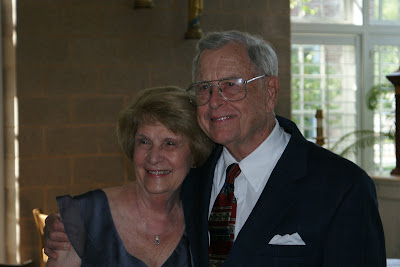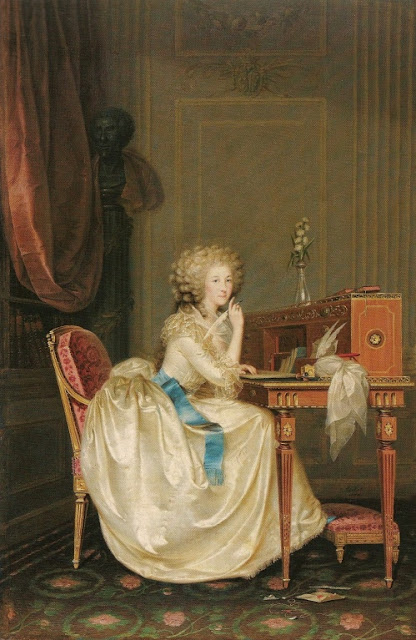Follow Me
Stars seem to cascade from the rose arbor at Marie Antoinette's Hameau.
Photo credit: Micah Bug
My close, personal (purchased) friendship with Versailles... and this book...
might make you love Paris as much as I do.
There are certain things that I have to do every time I go to Paris.
Non-negotiables:
Conciergerie
Musée Carnavalet
Cordeliers Convent
Les Puces flea market
Notre Dame Cathedral
Le Hameau and Petit Trianon
St. Germain des Prés neighborhood
Versailles Visite Privilège
Cour du Commerce area
route of the tumbrels
day trip somewhere
Le Coupe Chou
Le Louvre
There are certain things that I have to do every time I go to Paris.
Non-negotiables:
Conciergerie
Musée Carnavalet
Cordeliers Convent
Les Puces flea market
Notre Dame Cathedral
Le Hameau and Petit Trianon
St. Germain des Prés neighborhood
Versailles Visite Privilège
Cour du Commerce area
route of the tumbrels
day trip somewhere
Le Coupe Chou
Le Louvre
There are some I've seen, but not satisfactorily.: catacombs, Sainte Chapelle, Saint Denis Cathedral, La Chapelle Expiatoire, Sacre Coeur, the medieval wall remains, Palais Royale... Paris is full of nooks and crannies to explore. I want to go to Musée Grevin and see the actual bathtub in which Marat took a knife to the heart thanks to Mademoiselle Charlotte Corday. I'd like to hunt down the locations of scarcely known, obscure historical spots. Haussman's work altered the city so much that the Paris of the 18th century is no more. Damn the too late invention of the camera. A bit of research, though, and glimpses can be seen.
The Conciergerie
Click here to visit the Conciergerie website. Click Here to read a previous post in which I got carried away on the topic of the Conciergerie.
Probably my most frequently visited site, both because its location makes it easy for me to visit any time I feel like it, and because its history is profound and meaningful, is the Conciergerie. The former prison (which is part of a former medieval palace) is attached to the working courthouse, Palais de Justice. The Conciergerie was known, during the French Revolution, as the Antechamber to the Guillotine or the Antechamber to Death, because, as you might guess from the moniker, it was the last stopping place for most of those who ended their lives on the scaffold. It's open to visitors ("tourist attraction" is too cheap a phrase to be associated with such a place) with a mock-up of prison cells, including that of Marie Antoinette, lists of victims of the guillotine, photographic and text exhibits as explanation of a typical prisoner's life there.
Probably my most frequently visited site, both because its location makes it easy for me to visit any time I feel like it, and because its history is profound and meaningful, is the Conciergerie. The former prison (which is part of a former medieval palace) is attached to the working courthouse, Palais de Justice. The Conciergerie was known, during the French Revolution, as the Antechamber to the Guillotine or the Antechamber to Death, because, as you might guess from the moniker, it was the last stopping place for most of those who ended their lives on the scaffold. It's open to visitors ("tourist attraction" is too cheap a phrase to be associated with such a place) with a mock-up of prison cells, including that of Marie Antoinette, lists of victims of the guillotine, photographic and text exhibits as explanation of a typical prisoner's life there.
This picture is taken from the spot I usually stand and consider what the scene may've looked like and what the experience may've felt like when the tumbrels pulled up in the courtyard to pick up the condemned. I stop there nearly every day. The cart pulled up to the arched doorway on the right side of the stairs. Just inside the doorway, there's a courtyard, the Women's Courtyard, a corner of which is gated off and known as the Corner of Twelve, where prisoners were held, in batches of twelve as they waited for the last ride of their lives. For a period of time, spectators, the bloodthirsty element of the city, were allowed to stand behind the rail on the top of the building for a better view, where they'd cheer and jeer the unfortunate.
Left: The Women's Courtyard with Corner of Twelve in approximate center of photograph - the area of small round window just to the left of gate to Corner of Twelve is the general area of Marie Antoinette's cell. There's a trough sink, partially visible, below and to the right of the window, at which the women used to gather to wash their clothing and talk.
I want to do a nighttime cruise around the Seine again. Both of the above show the Conciergerie on the bank.
So, on to Musée Carnavalet...
If you'd like to visit Carnavalet's website, Click Here.
The whereabouts of French Revolution artifacts - material objects, large and small - has always frustrated me. What happened to all their stuff? A tour guide told me that Versailles only exhibits about 2% of what they have. I hope that's true, because the idea that artifacts are gone forever is upsetting.
Musée Carnavalet is towards the top of my list of Paris Requirements, because the buildings used to be the homes of two people that interest me and it houses a wide variety of artifacts. From the macabre (Louis XVI's hair and a wallet made of human skin, for example) to the merry... Well, the Revolution section has a woefully inadequate selection of "merry," times being what they were. Not so merry. You can see Louis-Charles' toys, but they're a pitiful reminder of an eight year old wasting away in a prison. If you want upbeat, check out eras other than the late 1700s represented in other wings of the museum. Surely there's something. Let me know what you find. I'll be in the Revolution section.
Marie Antoinette's hair, set into a ring and gifted to her close friend, Princesse de Lamballe who made the ultimate sacrifice to remain loyal to the Royal Family. Marie Antoinette actually held this ring, remember. And, the princesse actually wore it. Think of that for a moment.
Statues and portraits depicting, among others, revolutionary Antoine Barnave (who was won over by Marie Antoinette when he was assigned to guard her and her family on the trip from Varennes to Paris after their escape had been thwarted. He worked tirelessly on their behalf until he was implicated and executed for treason). I want to do a post about him someday. There aren't enough hours in the day.
This leather box held the pious Louis XVI's communion hosts during their time at the Temple.
The set with which Louis XVI played chess at The Temple as well as the Dauphin's toys and actual laundry list and a figurative "laundry list" of additional treasures
This is Committee of Public Safety member Georges Couthon's wheelchair. He believed his confinement to a wheelchair was a result of his "freely indulging his sexual proclivities. Doctors said it was run-of-the-mill meningitis. Beyond the wheelchair are famous portraits of revolutionary journalists Jean-Paul Marat, who was stabbed to death in his bathtub, and Camille Desmoulins who died on the scaffold, clutching a lock of his wife's hair. Cabinets full of odds and ends of spectacular interest line the walls.
Re-creation of the Royal Family's rooms in The Temple
Recreated rooms from Paris' Eighteenth Century hôtel particuliers
Paris during the Revolution
The great thing about Paris is there's plenty to see within walking distance and there's no need for public transportation. It may take a couple of hours to get where you want to go, but during that couple of hours, one is enveloped in Paris, for God's sake, and every direction fascinates.
In no particular order...
Paris during the Revolution
The great thing about Paris is there's plenty to see within walking distance and there's no need for public transportation. It may take a couple of hours to get where you want to go, but during that couple of hours, one is enveloped in Paris, for God's sake, and every direction fascinates.
In no particular order...
Must walk past this, the Duplay home, where Robespierre lived as an honored guest and then passed, a dishonored passenger of the tumbrel, en route to the guillotine. Must stand before it and contemplate. G. Lenôtre left an excellent description of the home as it was at the time. Will post it someday.
Must stand on the various bridges that span the Seine and indulge in additional contemplation.
Now, this is kind of cool. This contraption is backstage at Marie Antoinette's jewel of a theatre at the Trianon. It was used to produce a thunder sound in the plays that she and her close friends and select relatives created. Yep, I've seen it, thanks to Elissa who feigns not to know the meaning of the word No. Our private tour of the theatre included walking on the stage and going behind the curtains. It was incredible.
A block from my favorite hotel. In the back of the tiny grocery, there's a kind of what Americans would call a deli. Not sliced meats, but delicious dishes to take away - seafood, salad, meat, vegetables, desserts - not cheap, but high quality and delicious. I love to pick up food after a long day, eat in bed while I check email and rest, then go back out and walk some more.
The secret hallway through which Marie Antoinette escaped to the safety of the King's rooms when the mob killed her guards and broke down her door during her last night at Versailles.
The gargoyles of Notre Dame act as water spouts.
A sampling from the grocery down the street enjoyed by Micah and me in 2010.
Le Louvre at night
With the Paris Museum pass, you can skip the line.
With the Paris Museum pass, you can skip the line.
My friend, Michele, took this right after I found a note Micah had hidden for me at the Palais Royale when she'd been there two weeks prior.
Rain and clouds only enhance the beauty of Paris.






















Comments